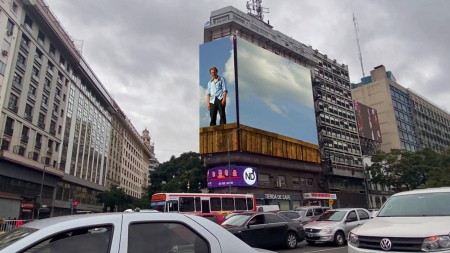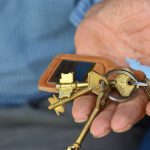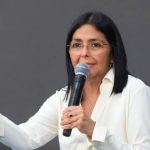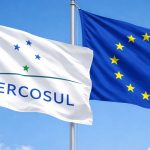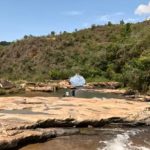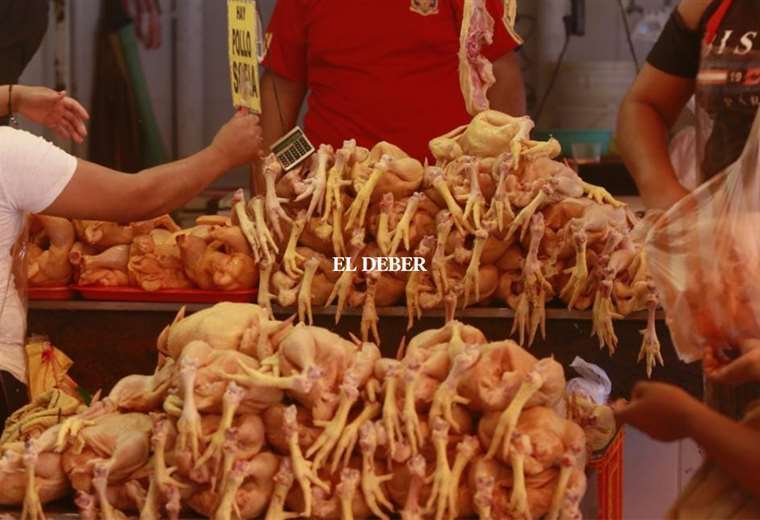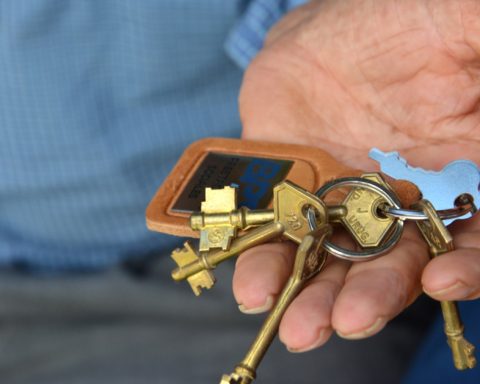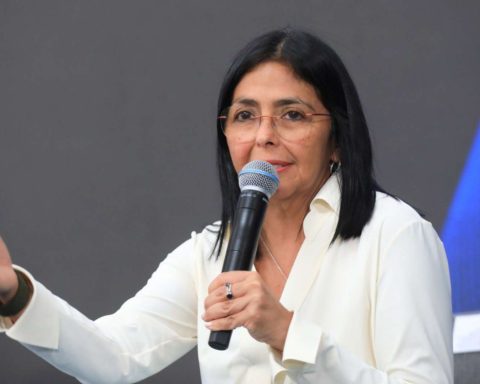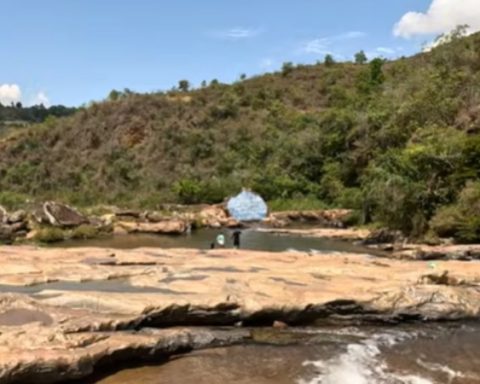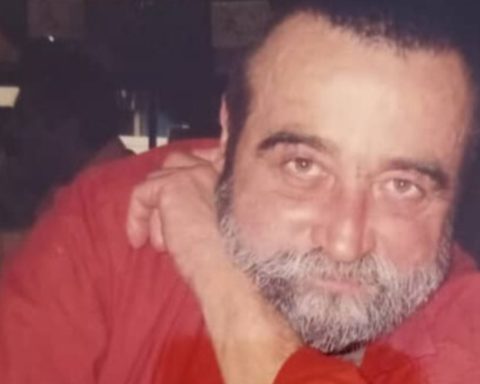With a setting that contemplates raising the blinds of premises that were left empty after the pandemic to make them function as exhibition spaces and other initiatives that will take to the streets of an urban area that was historically synonymous with bustle and concentration, starts next thursday Microcenter Accountan initiative that over 10 days will offer samples, performances and installations to activate the repositioning of the Buenos Aires circuit where until a few years ago offices, shops and cultural centers were concentrated.
With free access, until February 12 it will be possible to participate in the cycle promoted from the private sphere and presented by the Buenos Aires Ministry of Culture that will offer artistic activities of various disciplines that range from from tapestries and murals to urban interventions, projections and concerts with bells in a bounded circuit between Avenida Santa Fe and Avenida de Mayo on the one hand, and between Avenida 9 de Julio and El Bajo, on the other.

The programming will take shape hand in hand with the different proposals that will be presented by both recognized and emerging artists, including Luis Felipe “Yuyo” Noé, Martín Churba, Luciana Acuña, Federico Orio, Fernando Rubio, Agustina Sario, Matthieu Perpoint, Marcela Sinclair, Eli Sirlin, Magalí Acha and Matías Sendón and Fernando Rubio.
The project, which seeks to resignify the spaces and the cultural importance that the Buenos Aires microcenter had in past decades, was conceived after the pandemic that left an opaque landscape as a result, with a decrease in face-to-face cultural events and the movement of people. In dialogue with Télam, Javier Grosman, cultural manager and member of the direction of the cycleconsiders that “the pandemic was a catalyst for processes that were already taking place around the world.”

Microcentro Cuenta took root from the concept of “positive gentrification”, a term that is mostly used to refer to how a downtown neighborhood inhabited by workers who are displaced by a population with greater purchasing power is revalued. “Financial centers, based on the new modalities, are becoming unstructured in their more traditional formats. This means that these places begin to have a different urban model, circulation and participation of people,” Grosman observes about the changes they went through the metropolises.
“From then on, for many of us who are thinking about this situation, it seemed to us that the gentrification processes, which are normally taken in negative terms from the point of view of urban planning, were an opportunity for culture,” he explains. .
Microcentro Cuenta has prepared a vast program with the intention of offering a comprehensive experience for those who live, visit and transit the area, with a focus on contemporary art. “Contemporary art is transformative: it gives new meaning to places and social relationships. It seems to us that it is a very strong engine,” says the director of the initiative.
Among the artists who will carry out activities in the public space are “Reparo” by Martín Churba and Guillermo Cameron Mac Lean, an installation that will have its premiere on Thursday at 6:00 p.m. at Tres Sargentos 347 and will continue until Sunday, February 12. also stands out “Amorphous”, by Luciana Lamothecurated by Estefanía Flórez Bernal and produced by Agustina Vizcarra, which will take place on February 12 at 6:00 p.m. in Rivadavia and Piedras.

“Reparo” by Martín Churba and Guillermo Cameron Mac Lean
“repair” is entirely built with discarded and recycled materials in the form of screens that make up a shelter for passers-by in the Tres Sargentos passage. Churba has already worked with this type of material in “Humana”, an impressive aerial installation also made with recycled material provided by cooperatives that work in the city.
“The interesting thing is that we were using that raw material that they collect and then recycle and we were using it in different instances of their production,” tells Télam Cameron Mac Lean. For example, the cable that supports the screens that make up the work comes from the plastic recycling process: “When the plastic is demolished, it becomes these cables that are filtered and what is not plastic is removed, to later be ground and that grinding is used for a new product”, explains the artist.

In this way, according to the creators, there is nothing predefined in the work. “The color palette has the wonderful magic of non-decision. So, I think it’s a game that consists of doing with what there is, transforming what there is into something else,” reflects Churba.
What does a work called “Reparo” in the downtown area imply? “At first, I noticed it was from the sun on a very particular street that has the heat of the downtown area but does not have a lot of other issues such as audiovisual contamination, or work adrenaline and the number of people who run around there” Churba says.
Later, the artists realized that the concept implied much more. “At one point, it is a spiritual reservation. When you enter that street and find the work, you will have the possibility of fragmenting the sky in colors, which at least is a good metaphor to ask yourself thoughts of imagination, linked to the dreams, to desires”, reflects the creator of “Humana”. The artists call this work a “Rite of Passage” because “there is one way in and one way out.”

For the creators of “Reparo”, the Microcentro Cuenta proposal is “very suggestive to mark possible norths”. “Although it is temporary, it will generate anchorage and awaken new projects. We and the organizers aspire to that. What they are trying to do is change the face of the downtown, but above all, generate new experiences that are printed on the old ones,” Churba considers . “It’s a street party and there’s no wasteis the moment where you make your city yours”, says the artist about the initiative.
“Amorphous”, by Luciana Lamothe
In harmony with this type of proposals that give new meaning to public space through art is the intervention by Lamothe entitled “Amorfa”, in which sculpture, installation and performance converge.
“The project is a sculpture that is activated by the movement of the bodies. There is no sculpture on one side and performance on the other. It is the same organism made up of a group of people and a large strip of plywood displayed along the street. This wooden strip molds itself to the shape of the bodies at the same time that she gives in to the push and moves forward”, explains the creator.

From the first moment, the work was designed to be installed outdoors. “It was a project that arose in the middle of the pandemic, when the streets were empty. I’m sure that influenced him to think about an activation in the middle of the street,” Lamothe reflects on the invention process.
“‘Amorfa’ is talking about moving forward in uncertainty, which is to say, a little blindly, while its own soft nature proposes something very positive in terms of adapting to any possible obstacle. I think it’s a very collective feeling of these times. and I wanted to share it that way,” he says.

For Lamothe, Microcentro Cuenta “will be an important event from the point of view of the implications and scope that art has in society”. “I like when art expands to the public space because it comes out of the shoebox that museums sometimes become. Art should be a more everyday experience for people, because it humanizes and sensitizes people,” he says. the artist.
The expectation on the part of the Microcentro Cuenta organization is to be able to hold another edition this year and make it “more than an event”. “That it be a succession that gives it meaning and that collaborates with an area rich in activities and a lot of people who are thinking on a daily basis. We want to collaborate so that this flows in such a way that it allows revitalization and that it gives the people of the culture, art and thought an opportunity to participate in urban renewal”, concludes Grosman.
